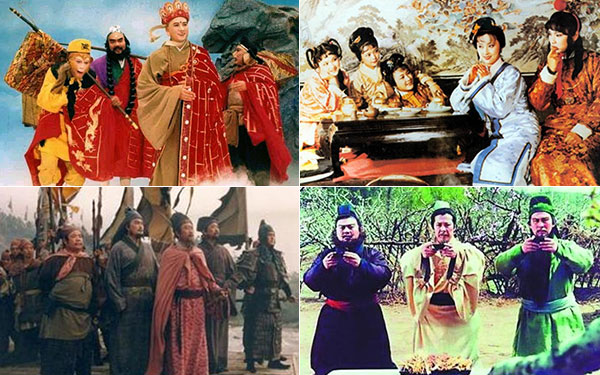清朝
Culture in the Ming Dynasty and the Qing Dynasty
明清文化
During the Ming and the Qing dynasties, on account of the sprouting of capitalism and the merging and developing of the urban areas, the ideology of early enlightnment, which was directed against the dark autocratic politics, started to rise.
明清时期,由于资本主义的萌芽和城市地区的融合与发展,抵抗黑暗的独裁政治的早期启蒙思想开始出现了。
The representative figures were Li Zhi, Huang Zongxi, Gu Yanwu, Wang Fuzhi and Dai Zhen in the end of the Ming Dynasty and the early Qing Dynasty.
代表人物有明末清初时期的李志、黄宗羲、顾炎武、王夫之和戴震。
They exposed the irrationality of the system of autocratic monarchy, condemned the hypocrisy and cruelty of Neo-Confucianism, advocated practical learning and proposed a notion that industry and commerce were both the foundations.
他们表达了独裁统治体系的不合理性、指责了儒家正统思想的伪善与残忍、鼓励学习的实用性并提出了工业和商业都是基础的观点。
But on the whole, this criticism was still in this primary stage.
但是总体来说,这些批判仍然处于初期阶段。
It hadn’t formed into an integrated system of thought.
它并没有形成思想的完整体系。
Therefore, these social critics were not able to propose new plans for social reform.
因此,这些社会批评家无法为社会改革提出新方案。
In the period of the Ming and the Qing dynasties, facing the mature traditional culture, the ruling class took it as their key task to systemize academic achievements.
明清时期,面对着成熟的传统文化,统治阶级将系统化学术成就当做他们的主要任务。
The Ming and the Qing dynasties employed plenty of manpower and abundant financial resources to collect and systemize a tremendous amount of ancient books.
明朝和清朝雇佣了一大批人力和经济资源来使大量的古代著作系统化。
They successively compile “Great Encyclopedia of Yongle” and “A Collection of Books Ancient and Present”.
他们成功编著了《永乐大典》和《古今图书集成》。
These two books were works combining to some extent the characteristics of encyclopedias and concordances.
这两本书在某种程度上结合了百科全书和著作索引的特点。
“Complete Library in the Four Branches of Literature” was a large-scaled collection.
《四库全书》是一部大型藏书。
“Complete collection of Prose in the Tang Dynasty” and “A Complete Collection of Poems in the Tang Dynasty” were general anthology of prose and verse.
《全唐文》和《全唐诗》综合来说是散文和诗歌的选集。
“The Kangxi Dictionary” and “Exegesis of Classical Works” were large reference books.
《康熙字典》和《典籍注释》是大型的参考书。
Meanwhile, there rose a study of textual criticism, forming the “Qian Jia School” which was rather infulential at that time.
同时,这个时期产生了一门文学批判的学科,建立的乾家学派在那时非常有影响力。
From the angel of philosophy and by means of exegesis, the scholars re-annotated Confucian classies and other classical works.
通过哲学的支持和解释,学者们重新为儒家经典和其他典籍作了注释。
It was one of the great achievements in China’s ancient cultural history.
这是中国古典文学史上最伟大的成就之一。
So they made an important contribution to preserving and inheriting the traditional Chinese culture.
因此,它们为保存和继承中国传统文化作出了卓著的贡献。
In the literary world of the Ming and the Qing dynasties, the greatest success was attained in the creation of novels.
在明清时期的文学世界中,小说获得了最大的成功。
“The Romance of the Three Kingdoms”,“Water Margin”, “Pilgrimage to the West” and “A Dream of Red Mansions” were called altogether as the four greatest classical novels.
《三国演义》、《水浒传》、《西游记》和《红楼梦》被称为四大名著。

In science and technology, there came into being some great academic works of summa, such as Li Shizhen’s “Compendium of Materia Medica”, Pan Jixun’s “A Survey of Flood-Prevention Work on Rivers”,Xu Guangqi’s “A Complete Treatise on Agriculture”,Song Yingxing’s “Tian Gong Kai Wu” and Xu Xiake’s “Xu Xiake’s Travel Notes”, etc.
科学和技术上出现了许多优秀的学术总结性论文,比如李时珍的《本草纲目》、潘季驯的《河防一览》、宋应星的《天工开物》以及徐霞客的《徐霞客游记》等等。
The Brilliant academic achievements in a feeble political climate constituted a peculiar cultural landscape of the Ming and the Qing Dynasties.
软弱的政治环境中灿烂的学术成就构成了明清时期一道特别的文化风景。













